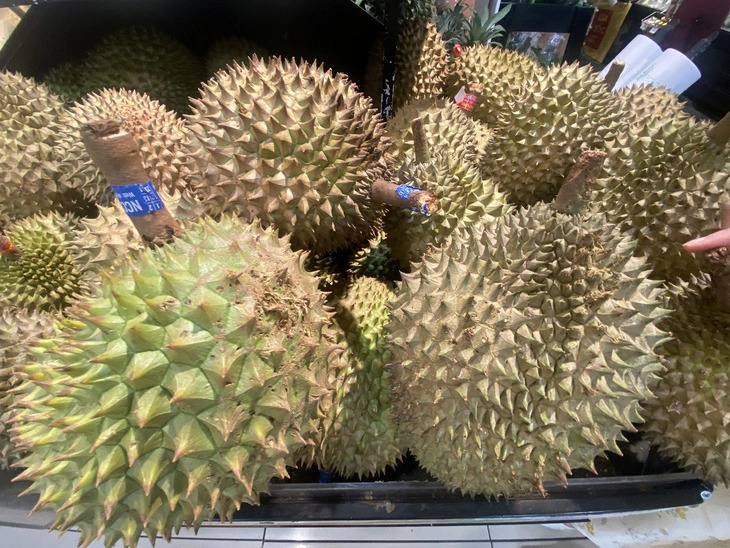Thirty shipments of Vietnamese durian exported to China have been found to be contaminated with excessive cadmium, a toxic heavy metal, the General Administration of Customs of China (GACC) has warned and requested the Vietnamese side to probe the contamination.
The Plant Protection Department (PPD) under Vietnam’s Ministry of Agriculture and Rural Development, recently received a GACC notice warning that the contents of cadmium in these shipments have exceeded the threshold prescribed in China’s food safety regulations, Huynh Tan Dat, director of the department, told Tuoi Tre (Youth) newspaper.
As a toxic heavy metal, cadmium is a human carcinogen that can accumulate over time in the human body with detrimental effects on the kidneys, lungs and bones, according to the Food and Agriculture Organization of the United Nations.
As requested by GACC, the department on Monday requested plant quarantine sub-departments and relevant businesses to coordinate in tracing origin of the contaminated durian shipments and investigating the cause of the contamination, Dat said.
He emphasized that the exporters of these shipments must strictly comply with the ministry’s regulations on traceability, recall and handling of unsafe food.
They are required to review all their processes of production, harvest, collection, processing and export of durian, and obtain lists of plant protection drugs and fertilizers having been used for these 30 shipments.
All businesses involved must set out measures to remedy such contamination and prevent similar cases from occurrence in the future.
Reports on tracing origin of contaminated durian, the causes of contamination, and remedial measures are required to be submitted to the PPD before April 1, Dat stated.
The PPD also requested the Ho Chi Minh City Department of Food Safety of and the departments of Agriculture and Rural Development of Hanoi and the provinces of Tien Giang, Lang Son, Dong Nai and Dak Lak to direct functional agencies to supervise involved businesses in the origin tracing process.
These departments must also verify the reports on the contamination causes and remedial measures, and check the food safety conditions at durian producers and traders involved.
All relevant reports should be completed soon and sent to the PPD so that the agency makes an official reply to the GACC before April 3, avoiding the Chinese side releasing conclusions that can be detrimental to Vietnam’s durian exports.
Last year, China spent US$2.1 billion on 493,000 metric tons of Vietnamese durian, up 1,036 percent in value and 1,107 percent in volume compared to 2022, making it the largest importer of durian from Vietnam, according to VietNamNet.
Such results sharply increased Vietnam’s durian market share in China from 5 percent in 2022 to 34.6 percent in 2023.
Like us on Facebook or follow us on Twitter to get the latest news about Vietnam!

















































